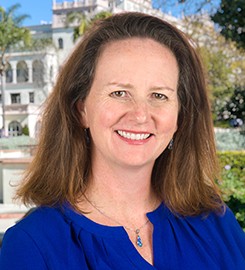Hello, I’m Brian Kurth of Revere Skills-based Volunteering Software. With me today, sharing her 3 Tips in 3 Minutes for CSR Leaders is Sue Carter Kahl.
Thank you so much for having me. I’m looking forward to our conversation.
Please talk a little about your consultancy and your client work. Perhaps even some of your favorite areas within the vast CSR and social impact umbrella.
My consulting and facilitating work focus on the value that volunteering brings to organizations. I work with nonprofits, philanthropic organizations, as well as foundations.
My work and research are about how we talk about volunteer impact. Our language can bridge the space between theory and practice to make a stronger case for volunteering.
Qualitative and quantitative: Perfect. And what are your three tips?
Tip #1
First, I think of crafting service as a Venn diagram. Picture the intersection of the community, the nonprofit, the company, and the volunteers.
We may only consider how we position the company and make volunteering enjoyable for the employees. In that case, we may need to include what the community needs. What suits them? What honors their confidentiality? What does our nonprofit host want from us? Thinking about how we find service that can meet all of those requirements is powerful.
And that intersection is usually quite large—more extensive than many folks would assume.
Tip #2
Next, diversify impact beyond what we can count, and include data points reflecting what the community serving would define as success.
Consider capturing impact in ways that go beyond the quantitative. The way we talk about measures and metrics focuses on what we can count and what can be priced.
But often, when we’re talking about the quality of the program or service, we miss things that are hard to measure. So it’s not like we’re just trying to teach a child to read; we hope to make reading fun and exciting and get them enthusiastic about reading. It’s not only moving a meal from point A to point B; we’re trying to do that with dignity, respect, and care.
We want to think about how to capture, reveal, and show impact. This thinking combines the qualitative and the quantitative. When we marry the two together, it can be a powerful way to tell a story.
I love thinking of the word reveal—showing what happens before, in the middle, and at the end of the project.
Tip #3
Yes, research shows that volunteers are often how the work gets done, but they can be overlooked and invisible. So when we think about revealing, what other things that aren’t obvious get done?
My third tip is to consider the return on purpose and values and the return on investment.
It’s possible to be so focused on the financial returns of service, how it is coming back to our company, and our employee engagement numbers that we forget to ask why we are doing this in the first place.
What are we trying to express as part of our corporate values? Asking these questions will align us well with the community and the nonprofit. Why and how we engage in community work are at least as essential as financial return on investment.
So how about the return on our purpose and values as a way to demonstrate impact in new and creative ways?
Sue, thank you for your three informative, revealing tips. But if people watching and reading want to reach out to you, what’s the best way?
I always love to connect and talk about what’s working or where there may be opportunities to dig through what’s not working. People can reach me on LinkedIn and Twitter or read more on my blog, Volunteer Commons.
And your website, Sue Carter Kahl Consulting, right?
Thank you so much for sharing your 3 Tips in 3 Minutes for those in the CSR and social impact field.

Sue Carter Kahl, Blogger & Consultant
Sue has dedicated her professional life to working and volunteering within the nonprofit sector. She now uses this experience and expertise as an evaluator, writer, facilitator, and trainer for national, state, and local clients. You can connect with Sue through her website, LinkedIn, Twitter or read more on her blog, Volunteer Commons.
